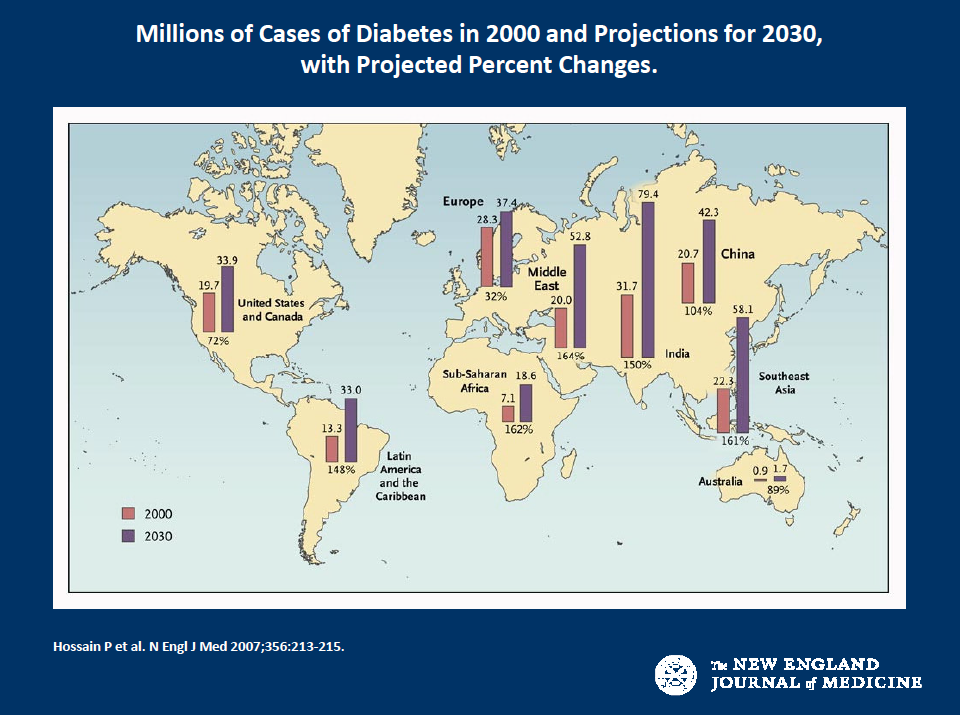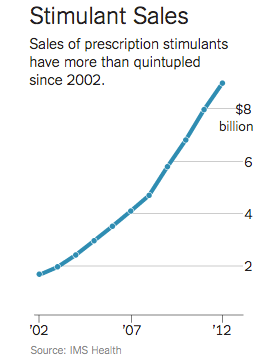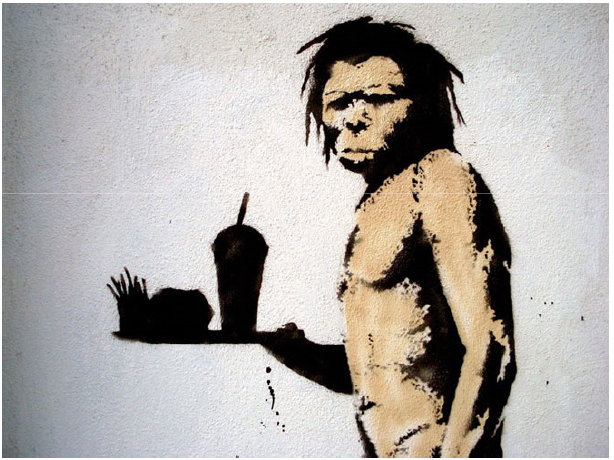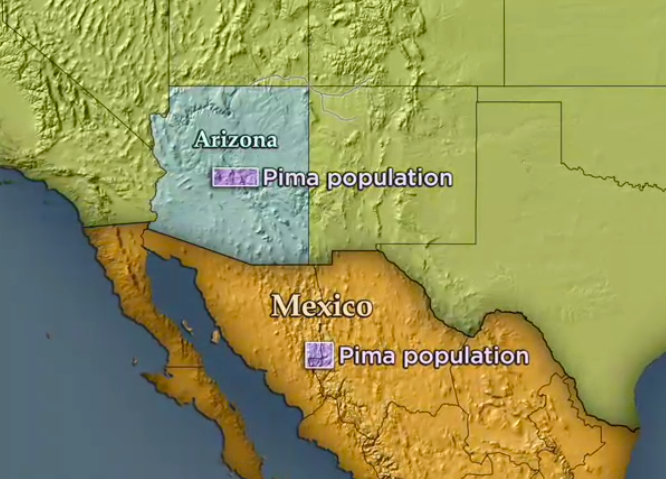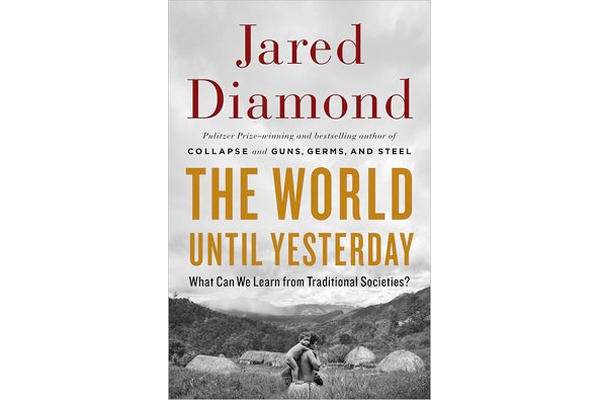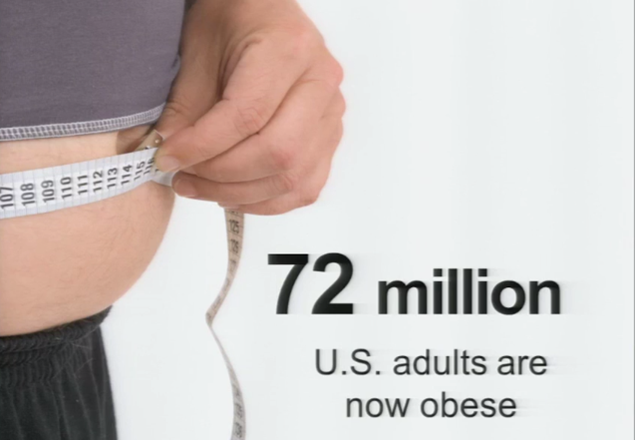Lecture by Mark Pettus transcribed by Carolann Patterson
CREATING HEALTH - Exploring the Causes of the Causes is the first of eight lectures created to form "a wellness road map." The Creating Health lecture series is about how you function. How you function determines how you feel. In eight weeks we will explore the key metabolic underpinnings of how we function. We will learn how our biology becomes our biography.
The #1 cause of death and diminished quality of life are the choices we make. Healthy living does not happen at the doctor’s office. Good Health requires that we transform perceptions of self-care and what we as humans are capable of. It’s not the hand you’re dealt. It's how you play your cards.
Every choice we make has the power to transform our DNA. Lifestyle choices, our thoughts, the food we eat can all alter the microbiome [that is what lives inside us]. For better or worse, our choices lead to Wellness or Disease that takes shape as fatigue, depression, pre-diabetes, diabetes, obesity, and more...
How did the outside get inside?
Yogi Berra, my favorite yogi, once said “The future ain't what it used to be.” In a medical sense, this translates to the need to deconstruct our ways of thinking about self-care so that we may learn and acknowledge the impact of our choices. What we bring into our lives and what we put into our bodies matters.
In his short story Dubliners James Joyce said “Mr. Duffy lived a short distance from his body.” It's a perfect quote to illustrate how in this modern age we have so little time to examine who we really are. This dynamic leads to a total disconnect between the Mind, Body and Spirit. Now, more than ever, we need to be more mindful about all that is around us and learn more about the choices we make in order to understand our good health, and bad.
Albert Einstein said it best with “Reality is an illusion, albeit a persistent one” to explain that reality constantly shifts and changes so that truths become...less true with time [and research]. When we apply this message to self-care, one of the most significant changes to surface through research is that Your DNA in NOT Your Destiny, a key theme that will resonate throughout the Creating Health lectures.
A proposition for Creating Health
'Creating Health' is different from 'Preventing Disease,' 'Early Detection,' and 'Managing Disease.' It works from the starting point that the choices we make have the power to optimize our biology. Good choices yield kick-ass performance in our lives. Creating Health assumes that Good Health is more than a healthy blood pressure, cholesterol reading, and heart rate. It's about looking at our health in new ways and from many angles in order to create a new definition of self-care that reduces or eliminates the bad and fills up on the good.
Here are some key "take-away" points from the Creating Health lectures:
- All health and disease are byproducts of complex individualized gene-environment interactions that may go back more than a generation before conception and continue throughout our lives and into the next generation. [yep, if Grandpa smoked then it has a bearing on you]
- Your genes i.e., your “Book of Life” have a Stone Age imperative, not often compatible with 21st century environmental inputs.
- This incompatibility creates a disrupted biology e.g. inflammation that forms the basis of chronic complex disease and diminished quality of life. Our environment is no longer suited for "the Book of Life" to adapt to environmental toxins, stress, and modern day:night rhythms.
- Epigenetics is the relationship between our choices and how our genes function.
- You can reduce-eliminate inflammation by aligning your lifestyle choices with your genes. Simply put: You can Create Health through the choices you make by getting to know what choices are best suited to your genes.
There's been an explosion of knowledge.
Epigenetics research has doubled; microbiome research has doubled in the past year; and we're shifting away from Nature vs Nature to Nature via Nurture. To provide some context, here is a list of the different "moving pieces" on the playing field:
- Ancestral 'Book of Life" - Evolutionary Biologic Lens
- Functional – Systems Biology Model
- Personalized Lifestyle Medicine
- N = 1 (the quantified-self), measuring as much as you can about yourself, lots of Data Analysis
- Food as Medicine, what you eat is a 'promoter' or 'disrupter'
If you change something in your environment, evidence will determine what is best for you. Each of us has a unique "Book of Life." Changing variables - such as your intake of gluten, sugar or alcohol; your exposure to environmental toxins; or the positive addition of exercise, yoga and meditation - will alter your ability to thrive.
Mark Twain had another way of defining Reality: “It’s not what we don’t know that gets us into trouble, it’s what we know that ain't so.” What did we once know that turned out not to be so? …Smoking is not bad for your health; If you live long enough you will get hypertension; My doctor told me I am feeling poorly because I am just getting old…
Daniel Boorstin refers to the illusion of knowledge - “The greatest obstacle to discovering the shape of the earth, the continents, and the oceans was not ignorance but the illusion of knowledge.” So what does that say about the current state of our health? It signals that we need to re-examine what we think we know and discover new "truths" to treat mounting health issues as outlined below.
The Current State and the Stats:
Doctors, health care providers, and care-givers are constantly "mopping up," putting out fires and helping patients gain traction. It's increasingly difficult to get to the source of many health problems. In the end, what gets treated is more often the symptoms, not the cause. This section references statistics to demonstrate the state we're in:
The Growing Burden of Chronic Complex Disease
- 7 out of 10 deaths among Americans each year are from chronic diseases. Heart disease, cancer and stroke account for more than 50% of all deaths each year
- In 2005, 133 million Americans – almost 1 out of every 2 adults – had at least one chronic illness
- Obesity has become a major health concern. 1 in every 3 adults is obese and almost 1 in 5 youth between the ages of 6 and 19 is obese
- About one-fourth of people with chronic conditions have one or more daily activity limitations
- Diabetes continues to be the leading cause of kidney failure, non-traumatic lower-extremity amputations, and blindness among adults, aged 20-74
- You can reduce-eliminate inflammation by aligning your lifestyle choices with that which your genes are best suited for.
Health Patterns of Our Children and Young Adult
- Infants come into the world with over 200 measurable environmental toxins
- Asthma: in 1980, 1 out of 30 kids were diagnosed. In 2010, 1 out of 10 kids
- Obesity- rates have tripled in the age 12-19 adolescent group over the last 25 years
- Allergies: according to JACI, the rate of serious peanut allergies has tripled over the last 10 years
- Behavioral: Rates of attention deficit-hyper activity disorder [ADHD] diagnosis increased an average of 3% per year from 1997-2006, ever increasing to an average of 5.5% per year from 2003-2007. In 2007, almost 10% of America's children aged 4-17 years of age are or have been diagnosed with ADHAD.
- Children aged 2 to 19 consume seven trillion calories of sugar-sweetened beverages a year. It’s a $24 billion industry just for kids alone.
- Obesity prevalence among men would rise from 32% in 2008 to approximately 50% and from 35% to between 45% and 52% among women
- 7.8 million extra cases of diabetes
- 6.8 million more cases of coronary heart disease and stroke
- 539,000 additional cases of cancer
- Annual spending on obesity-related diseases would rise by 13-16%, leading to 2.6% increase in national health spending
Environments are changing across the globe with the rise of Diabetes, now a pan-species epidemic.
Growth beyond maturity-macroeconomics. Global Deaths from Infectious Disease by 2020 will be Less than 20 MILLION. More than 50 MILLION deaths will be caused by chronic disease.
Diabetes
Today one in four Americans over 60 years old has type 2 diabetes. By 2020, one in two Americans will have pre-diabetes or diabetes. From 1983 to 2008, world-wide diabetes incidence has increased 7 fold from 35 to 240 million. Remarkably, in just the last 3 years from 2008 to 2011, we have added another 110 million to the diabetes roll call. Increasingly, small children as young as eight are being diagnosed with type 2 diabetes (formerly called adult onset diabetes). They are having strokes at 15 years old and needing cardiac bypasses at 25 year old. The economic burden of caring for these people with pre-diabetes and diabetes will be $3.5 trillion over 10 years.
We're a Drugged Culture. There is a tremendous role for pharmaceuticals and behavioral health drugs, especially when patients are in free-fall, but we can deconstruct the ways we think about them and how we use them...
We're More Medicated than ever before...
We're More Stimulated than ever before...
“The one thing that distinguishes man from other creatures is man's desire to take medications,” William Osler - 1910
How does a Functional-Systems Biology Model differ from the way we are currently looking at our health? Instead of looking at "the leaves" of disease to determine treatment, Functional Biology turns the model on its head and shifts analysis to begin at the roots, to find the root causes. Once we discover the root causes we can change our biology by changing our behavior. Our DNA is more malleable than we think. We are NOT locked in to our genetic legacy.
Disease [how things appear] - Pre-Diabetes, Diabetes, Obesity, Metabolic Syndrome, Heart Disease, Stroke, Depression, Autoimmunity, Alzheimer’s, Cancer, Autism, ADD, Hypertension
Core Metabolic Imbalances [what drives them] - Inflammation-Immunomodulation, Fight-Flight (HPA axis), Microbiome (Gut-Immune), Detoxification, Hormonal, Insulin resistance
Root Causes [what are their origins] - Gene-Epigenome Environment, Nutrition, Movement Stress Response, Environmental -toxins, Sleep Social Connection, Traumatic events, Conflict Management Mindfulness, Meaning in Work, Love & Play
What are the conditions of your ‘soil’?
- What am I getting too much of that is undermining my health and how can I reduce it?
- What do I need more of that I am not getting enough of to improve my health and how can I bring more of it in?
- What would my great grandparents have done when confronting ____?
Health as a byproduct of gene-environment compatibility
An Ancient Design in Modern Times The social and cultural context in which we live has moved forward at lightning speed into the 21st century. Our genetic endowment and the survival edge it brings with it, is still primitive. Our design has maintained many of the Stone Age imperatives, but life in the fast lane has not. We are not well adapted for this and we we will eventually break down. Here's a THEN and NOW to show how things have shifted:
- THEN: Targeted fight-flight [quick turn off and on]
- NOW: Anxiety, fear, PTSD, depression, all chronic, complex diseases [always on]
- THEN: Energy Conservation [quick turn off and on]
- NOW: Obesity and Metabolic Syndrome [does not turn off, we are always saving for a rainy day that will never come]
- THEN: Immunity [quick turn off and on]
- NOW: Autoimmunity and allergy [constant hyper-vigilant state]
- THEN: Promotion of clotting
- NOW: Heart attack and stroke [hyper-vigilant clotting]
!Kung People in the Kalahari Desert, Botswana have been around for 2.5 Million years living as foragers [Hunter gatherers] and eating everything - leaves, roots, berries, meat, fish - everything but processed food. Their diets exceed RDAs 2-10 fold [O’Keefe Mayo Clinic Poc 2004 Jan; 79(1):101-8]
Robert Sapolsky has studied the lives of baboons for decades. He is well known to the baboon tribe and is able to study them closely. Baboons are highly social. They groom one another and communicate threats. With the growth of African safari retreats and hotels came...DUMPSTERS. The primates had access to those dumpsters, and the food in those dumpsters. Naturally, they ate as much of it as they could. Sapolsky's primates became Junk Food Monkeys with:
- Increased weight with increased BMI
- Metabolic Syndrome
- Insulin resistance with elevated fasting and post-prandial insulin leves
- Increased TGAs
- Decreased Movement
- Less Socialization and less play
- Less fertility
- Earlier Death
Westernized Lifestyle
A recent study [noted below] provides compelling evidence that changes in lifestyle associated with Westernization play a major role in the global epidemic of type 2 diabetes. Prevalence of type 2 diabetes is 5 times higher in Arizona Pima Indians compared to Mexican Pima's. The researchers concluded that "the much lower prevalence of type 2 diabetes and Obesity in the Pima Indians in Mexico than in the US indicates that even in populations genetically prone to these conditions, their development is determined mostly by environmental circumstances, thereby suggesting that type 2 diabetes is largely preventable."
Pictured above: Mean body mass indices in hunter gatherers and non-westernized Populations show the BMI not exceeding normal limits in Australian Aborigines, Pygmies, !Kung, Innnuit, Yanomamo, Kren-Akore, Massai, Evenki and New Guineans. Recommended Reading: Jared Diamond, The World Until Yesterday - What Can We Learn from Traditional Societies? Diamond explores the introduction of grains and mono-commodities [corn, wheat] and its impact on growth and health [ie. lower height and greater number of cavities].
In 1890, Barnum & Bailey's Fat Man Freak Show – Chauncey “Human Freight Car” Morlan was RARE. Now, one in three adults is obese. Obesity may be the shape of things to come and "the new norm," but bigger is definitely not better. Research shows that the stress of our present diet and life choices create epigenetic change in our health.
Epigenetics
What else do we know that “ain’t so”? We now know that You are not a prisoner of your DNA. Case in point: TWINS. While genes of identical twins may be the same, their epigenome changes throughout life. Your epigenome is your “Book of Life’s” memory of prior environmental events and conditions.
Recommended reading: A Life Decoded, by J. Craig Venter explores what we have learned from the human genome project. The genome has far fewer genes than expected [23k]; the variation of the genes is far greater than expected with 3 million SNPs; there are no specific "disease genes"; our phenotype results from genes + environment that work through our epigenome.
Who's Randy Jirtle and what's an Agouti mouse? The Agouti mouse has a genetic mutation that interferes with the ability to feel full. They can't exercise and are depressed and overweight. Dr Jirtle administered maternal supplements [methylating agents] to pregnant Agouti mice and guess what? Their offspring [and their offspring in turn] were smaller and a different color and experienced lower risk of cancer, diabetes and obesity and they had a prolonged lifespan. The offspring were 'social superstars,' highly active and able to navigate the maze with ease and speed. Dr. Jirtle's research is a game-changer. See charts below for more details
MTHFR Polymorphism and Depression. DNA Methylation is essential for normal functioning of an organism. Patients who have the MTHFR C-T genotypes have a greater likelihood of having depression compared to those without the SNP.
Representative clinical conditions suggested to have epigenetic origins
- Type 2 DM and Metabolic Syndrome
- Coronary artery disease
- Autoimmune Diseases
- Cancer
- Allergic Disorders
- Depression
- Neurologic: Alzheimer’s, PD, ALS, Autism
Epigenetics and Nutrigenomics: Getting beyond 'food as calories' and thinking of food as medicine. Food has an impact on the methylation and a body's on/off switches. For example, Green Tea and EGCG produce epigenetic effects that repair genes.
NRf2 Activation is a critical intracellular defense, as it protects us from inflammation and is linked to Caloric Reduction; EGCG [in green tea];Resveratrol; Coffee; Sulfurophane; Curcumin/Turmeric [and brocolli, kale and cauliflower, too]
Brain Derived – Neurotrophic Factor (BDNF)
BDNF is decreased in depression, Alzheimer’s, epilepsy, schizophrenia and OCD. BDNF expression increases with Exercise; Caloric restriction; DHA - Omega 3; Curcumin/turmeric; EGCG and Meditation.*
*Results of the MIDAS trial: Effects of docosahexaenoic acid on physiological and safety parameters in age-related cognitive decline. Karin Yurko-Mauro, Deanna McCarthyMIDAS Investigators. Alzheimer's & Dementia: The Journal of the Alzheimer's Association, July 2009 (Vol. 5, Issue 4, Supplement, Page P84).
Xenohormesis
Plant based foods are nutrient dense.Things that the plant produces to protect itself are good for us, too.
Plants transfer the protective benefits to those eating them.
The converse principal holds true for foods raised in stressful, unethical environments.
Michael Skinner wrote in Scientific American [2013] “the ability of environmental factors to promote a disease state not only for the individual but also subsequent progeny for successive generations is termed transgenerational inheritance...Epigenetic changes in methylation of the genome of germ cells after specific environmental toxin exposure that become permanently programmed allow transmission of epigenetic transgenerational phenotypes."
Trauma in pregnant mothers can carry over into the offspring of survivors...
Project Ice Storm - data provide first evidence in humans supporting the conclusion that PNMS results in a lasting, broad, and functionally organized DNA methylation signature in several tissues in offspring. We can infer that the epigenetic effects found in Project Ice Storm are due to objective levels of hardship experienced by the pregnant women.
- FTO genotype did not predict obesity in people born before 1942
- Higher risk when born after 1972
- Greatest risk when born after 2000
- As it turns out, it’s not just about who you are but in addition, when you are!
Get Moving! Acute exercise remodels promoter methylation in human skeletal muscle
Examined methylation patterns in skeletal muscle of sedentary men and women before and after 45 minutes of moderate-intense exercise revealed Methylation patterns changed significantly in genes coding for PPAR gamma and IL-6 suggesting more favorable gene expression patterns as they relate to inflammation and insulin signaling. Barres R et al. Cell Metab Mar 2012
SCIENTIFIC AMERICAN – November 2014 The Neuroscience of Meditation [How it changes the brain, boosting focus and easing stress]
Meditate more. Stress Less. Mindfulness Based Stress Reduction [MBSR] and Reduction in Inflammatory Biomarkers
- Randomized controlled trial of 40 individuals
- Half received training in MBSR technique
- Treatment group scored better on emotional wellness
- Down regulation of inflammatory gene expression patterns
- Diminished NF-kappa B expression
- C-reactive protein reduced
Change of Scenery [Change of 'genery'] - where you live and how you live change your gene expression:
Environmental Programming of Gene Activity - Bonding and the Glucocorticoid Receptor Gene
Social Connection is critical to the methylation patterns. Child abuse disrupts methylation patterns and cortisol signalling function. Whereas bonding with children creates a different epigenetic pattern [of love].
Stamatis Moraitis left America after being told he had six months to live. He moved with his wife back to his ancestor's home on the isle of Ikaria. Almost four decades after the lung cancer diagnosis, he outlived the doctors who predicted his imminent death back in the 1970's. Ikaria is located in The Blue Zone, a geographical area known for the longevity of its inhabitants. The BBC made this heart-warming video of Stamatis in his olive orchard. Living there in the sunshine with healthy food and social connections kept Stamatis Moraitis busy, and very much alive.
"The doctor of the future will give no medicine, but will interest her or his patients in the care of the human frame, in a proper diet, and in the cause and prevention of disease.” Thomas A. Edison
Click here to Download Mark's lecture notes and to listen to The Health Edge podcasts.




